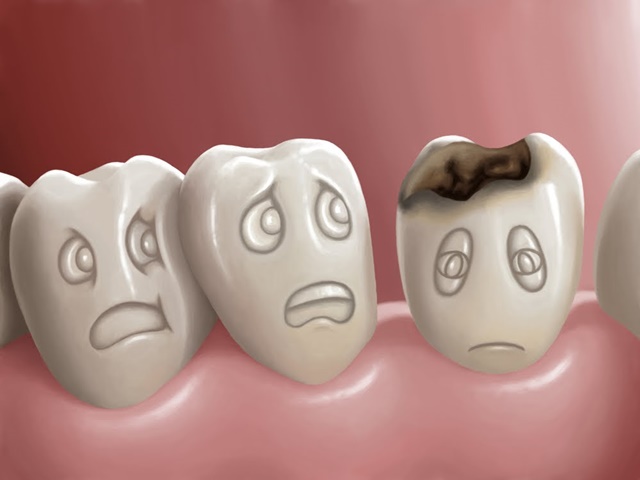Perhaps you will not be surprised by the fact that tooth decay is one of the most common ailments today. But did you know that this problem existed well before sugary beverages and desserts or even processed food? Recent findings in Marocco have provided vital evidence in this matter; archaeologists have uncovered a man who was 13 700 years old, and was a stone-age hunter-gatherer, which, upon examination, was found to exhibit signs of tooth decay.

Telling finds
In the times that this person was alive, many people subsisted on a diet high in carbohydrates, which caused their teeth to decay. This must have been a very painful existence, and their damaged, decayed dentition must have been the source of a lot of grief. A quote from a prestigious American journal (PNAS) seems to support this: After a certain point the dental nerve dies, but before that the pain is excruciating. If an abscess forms, the pain may well be torturous, as there will be pressure on the jaws. After a while the jawbone becomes perforated and the abscess disappears, and this jaw exhibits signs of just this process.- Writes Louise Humphrey, who works for the Natural History Museum Of London.
Tooth decay the world over
Today, decayed teeth are an epidemic. This is caused mainly by refined sugar and the millions of products made with it, that are all well loved by the human palate. Although this was different in ancient times, the arrival of agriculture changed our lives greatly. Because of agriculture, people started to eat more plants, which resulted in a higher starch diet. As technology advanced, the situation just got worse, as more carbohydrates could be churned out in less time. The era prior to this saw tooth decay caused mainly by berries and wild plants among our foraging and hunting ancestors.
What the Moroccan finds tell us
The Cave of Pigeons, located in East Morocco has yielded an extraordinary amount of finds and skeletons in the past 10 years. The teeth of 52 of the latter have been examined, and all but three of them had some amount of tooth decay present. More than half of the teeth examined exhibited some signs of decay or other damage, and one jaw was completely ruined by abscesses. These skeletons came from 13 700-15 000 years ago.
Palaeolithic life
But the excavations didn’t just yield skeletons; they also yielded the remains of plants. These finds proved that prehistoric man liked to eat pistachios, sweet acorns, pine nuts and snails with relish. It is probable that these people already had some rudimentary ways of cleaning their teeth and mouths, but foods like these would cause a massive proliferation of tooth enamel destroying bacteria. This would leave us to believe that prehistoric man didn’t just suffer from tooth decay, but probably had atrocious breath to boot.
Scientists believe that although the hunter gatherer lifestyle was prominent still at this point in time, the first signs of a sedentary existence are clearly present. This is evidenced by the elongated grave sites, and the primitive garbage disposals, which housed mostly the remains of plants. Louise Humphrey believes that the dentition may have been damaged for cultural reasons as well. Almost 90% of the skeletons have had at least one if not both of their canine teeth removed. Scientists do not know if people in this particular culture practiced tooth extraction for medical purposes as well.

